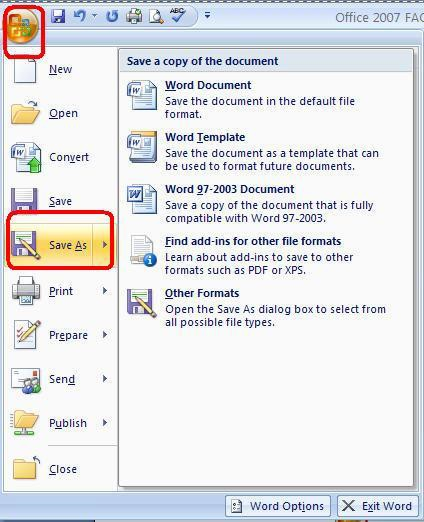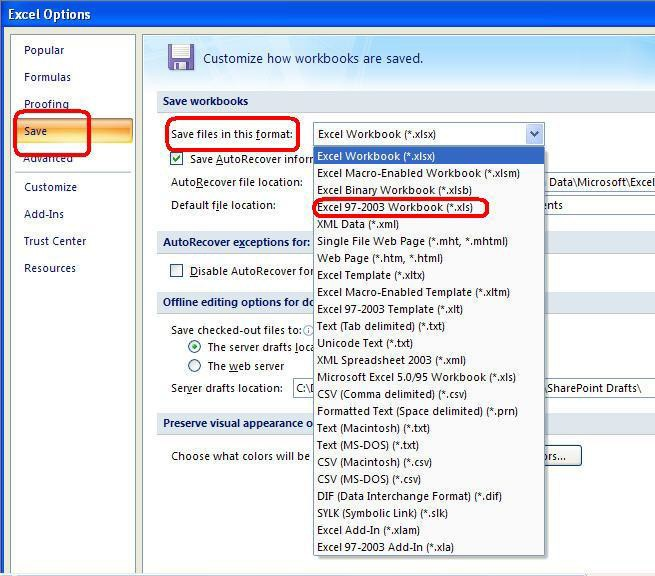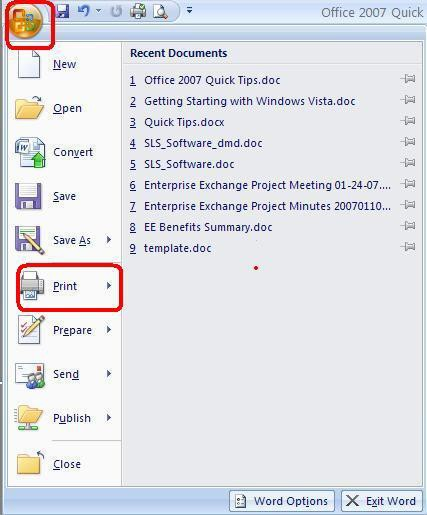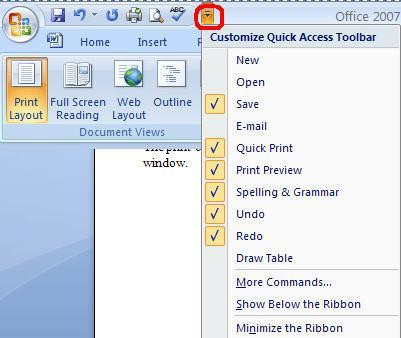You are here
Office 2007: FAQs
Where are the menu items and toolbars?
The menu items and toolbars have given way to the Ribbon. The Ribbon is a thick bar at the top of the application window that contains icons which are grouped together by usage. For example, all the editing items are found on the Home tab on the Ribbon, while commands used for bibliographies and footnotes are on the References tab.
How do I find things on the Ribbon?
The Ribbon organizes commands with others that are similar. The concept behind the Ribbon is that it will list all the commands that are needed for the context in which you are working. The following Ribbon tabs are typically displayed in Word. The Home tab has the common formatting commands, styles, bullets, and copy/paste. Insert contains all items that can be inserted into the file, such as pictures, clip art, pages, and text boxes. Page Layout contains margin, orientation, and spacing properties. The References tab contains the most common items needed when generating a professional paper, including footnotes, citations, table of contents, and index. The Mailings tab contains the items needed for a mail merge. Review contains spell check, thesaurus, and track changes. View contains the view options for the document and is the location of the Switch Windows command to move between files open in that application.
How do I save a file?
To save a file, click on the Office Button in the upper left hand corner of the Office application window. Select Save. Remember that the default format for Office 2007 is Open XML. If you would like to save your file in a format that is compatible with earlier versions of Office, choose Save As and select Word 97-2003.

How do I change my default Save format?
If you know that you will be communicating with others who use earlier versions of Office, you can change your default save format. Click on the Office Button in the upper left hand corner of the Office application window. At the bottom of the menu that appears, click on the Word, Excel, or PowerPoint Options button. Click on the Save option on the left hand side of the window, and from the drop-down menu by Save files in this format, choose the Application 97-2003 option. The example below is for Excel 2007.

How do I print?
The print option is now available through the Office Button which is found in the upper left hand corner of the Office application window.

I don’t like using the Ribbon or Office Button. Is there a quicker way to get to Save, Print, and Spell Check?
The Quick Access Toolbar is located to the right of the Office Button and can be customized to contain the commands you use most. By default, the Quick Access Toolbar contains save and undo/redo. You can also add quick print, spell check, or other commands. Click the down arrow by Quick Access and choose the command you want to display on the toolbar.

How do I switch between open documents?
In order to switch between open documents, click on the View tab on the Ribbon, and choose Switch Windows. In the past you may have switched between open documents by using <ALT> and the Tab key. With Office 2007, all open documents are contained within one open application window, therefore the <ALT> and Tab command will only let you switch between different programs, not different documents.

Do my keyboard shortcuts still work?
If you knew the keyboard shortcuts for common functions in earlier versions of Office, they will continue to work in Office 2007. Here is a list of the most popular Office shortcuts:
| Action | Key Command |
| Open a file | [Ctrl] + [O] |
| Close a file | [Ctrl] + [W] |
| Save a file | [Ctrl] + [S] |
| Print a file | [Ctrl] + [P] |
| Cut | [Ctrl] + [X] |
| Copy | [Ctrl] + [C] |
| Paste | [Ctrl] + [V] |
| Check spelling | [F7] |
| Select all | [Ctrl] + [A] |
| Select to the end of the line | [Shift] + [End] |
| Select to the beginning of the line | [Shift] + [Home] |
| Undo previous action | [Ctrl] + [Z] |
| Redo previous action | [Ctrl] + [Y] |